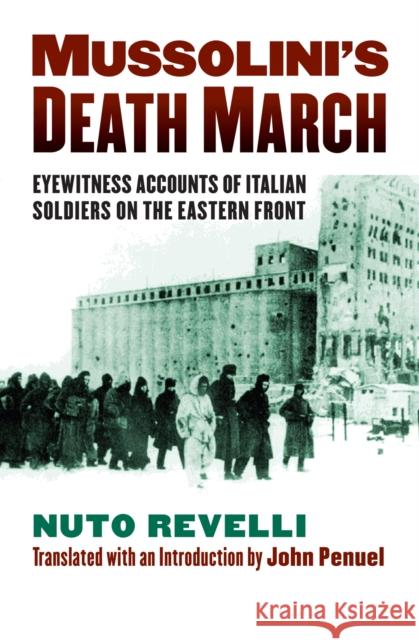Mussolini's Death March: Eyewitness Accounts of Italian Soldiers on the Eastern Front » książka
Mussolini's Death March: Eyewitness Accounts of Italian Soldiers on the Eastern Front
ISBN-13: 9780700619085 / Angielski / Twarda / 2013 / 566 str.
Mussolini's Death March: Eyewitness Accounts of Italian Soldiers on the Eastern Front
ISBN-13: 9780700619085 / Angielski / Twarda / 2013 / 566 str.
(netto: 351,53 VAT: 5%)
Najniższa cena z 30 dni: 349,35
ok. 16-18 dni roboczych
Bez gwarancji dostawy przed świętami
Darmowa dostawa!
In his quest for military glory, Benito Mussolini sent the Italian Eighth Army to the Eastern Front to help fight the Russians, only to have his forces routed within little more than a month of the launch of the Soviet counteroffensives of the winter of 1942-1943. The Cuneense, a division of mountain troops, was hit especially hard, with only a small percentage of its troops straggling back to Italy; the rest were killed in action or died of frostbite or in captivity from malnourishment, overwork, and disease. All told, the Italians suffered roughly 75,000 dead, more than in their six-month campaign in Greece and Albania or in their three years in North Africa.
Nuto Revelli, who fought in Russia himself, interviewed forty-three other survivors of the campaign for a book that has become a classic among Italian war memoirs. First published in Italian in 1966 as La strada del davai, Revelli's account, now available in English, vividly recaptures the experiences and sobering reflections of these men. It provides a chilling look at an experience that, in English-language writing, has been overshadowed by that of the main actors on the Eastern Front. When news of the rout reached Italy, the shock was devastating. In Revelli's home province of Cuneo, the recruiting territory of the annihilated Cuneense Division, some villages lost almost all men of military age. The resulting rage and bitterness later fueled the partisan war against the Germans and Italian fascists. The veterans of Mussolini's Death March speak candidly of nights in the open, of extreme cold, gnawing hunger, and eruptive madness. Thousands who survived the Soviet onslaught were taken prisoner and died on the so-called davai marches--named for Russian guards' command to keep prisoners moving--or later in the camps themselves. Even so, they developed a favorable impression of the Russian people, who provided hospitality in their small houses and aid to the wounded. Together, their recollections provide an eye-opening look at a largely neglected aspect of World War II.










